News
Altcoin News
Altcoin News
Browse all Altcoin related articles and news. The latest news, analysis, and insights on Altcoin.
Sui Prepares to Launch Two New Altcoins
The Sui blockchain, which is rapidly gaining prominence among Layer-1 solutions, is poised to introduce a major innovation to its ecosystem. Sui Group, Ethena, and the Sui Foundation will launch two new stablecoins: USDi and suiUSDe. This initiative marks the first time native stablecoins will be traded on the Sui network.One stablecoin will be backed by BlackRockUSDi will be backed 1:1 by BlackRock's tokenized money market fund, BUIDL. This fund, issued through Securitize, brings the secure nature of traditional finance to the blockchain environment. Meanwhile, suiUSDe will be a synthetic dollar backed by digital assets and derivatives, similar to Ethena's $14 billion USDe stablecoin model. This structure is expected to provide yield for users. Marius Barnett, President of Sui Group, said, “We believe this initiative will increase liquidity on the Sui blockchain, expand its use cases, and create long-term value. It will also make Sui Group one of the first public gateways to the global stablecoin economy.”Stablecoin competition is heating upIn the cryptocurrency sector, stablecoins have long been centered around Tether’s USDT and Circle’s USDC. However, recently, various projects have begun launching their own stablecoins. The Layer-1 network HYPE held an auction for the right to issue the USDH stablecoin; Native Markets, in partnership with Stripe, won this auction, aiming to reduce the ecosystem’s dependence on USDC. Similarly, the Ethereum scaling solution MegaETH plans to partner with Ethena to launch a native stablecoin.Sui’s new move is a strong example of this trend. In August, stablecoin transfer volume on the Sui blockchain exceeded $229 billion, setting a new record. This high volume particularly attracted the attention of Ethena Labs. The company's CEO, Guy Young, said, "Sui's performance and interoperability were decisive for us."Sui Group, listed on Nasdaq, recently announced that its SUI token holdings exceeded $300 million. The company is able to purchase tokens at a discount thanks to a special agreement with the Sui Foundation. Previously operating under the name Mill City Ventures, the institution established its crypto treasury with a $450 million private placement.The Sui blockchain is a Layer-1 solution operating with a proof-of-stake mechanism and positioned as an alternative to networks like Ethereum and Solana. The native stablecoin initiative is considered a significant step that will strengthen Sui's position in the ecosystem. At the time of writing, the SUI price is trading at $3.5, a 1% increase. USDi and suiUSDe, expected to launch this year, will facilitate users' access to dollar-pegged assets on the Sui network. This move is considered important in terms of increasing liquidity, integration with DeFi protocols, and providing users with access to a wider range of financial instruments.

Trump's WLFI Partners with Aptos: USD1 Will Be Integrated
World Liberty Financial (WLFI) announced that it will bring USD1, its stablecoin pegged one-to-one to the US dollar, to the Aptos network. This development marks the first time USD1 has appeared on a Move-based blockchain. The agreement, reached between Aptos and WLFI founders Donald Trump Jr. and Zach Witkoff, was officially shared on October 1st following the announcement. USD1's arrival on Aptos quickly resonated with the market. According to market data, the price of Aptos' native token, APT, increased by 8% to $4.56 following the news.USD1 will now be on the Aptos networkUSD1 will officially launch on Aptos on October 6th. Upon launch, the stablecoin will integrate with leading DeFi protocols such as Echelon Market and Hyperion. Additionally, wallets like Petra and Backpack, as well as major exchanges like OKX and Bitget, will immediately support USD1.USD1 is designed for low-cost and fast transactions. Its 1:1 redeemability with the US dollar strengthens trust. The stablecoin was already available on BNB Chain, Ethereum, Solana, and Tron. With Aptos's addition to this list, USD1 will now be on the fifth network.According to DeFiLlama data, USD1's total market capitalization is approximately $2.68 billion. The majority of this is on BNB Chain, with a supply of $2.13 billion. Ethereum has a supply of $326.8 million, Solana has $175 million, and Tron has a supply of $53 million.Aptos' Strategic PositionThe integration of USD1 comes at a critical time for Aptos. There is currently approximately $1 billion in stablecoin value on the network, placing Aptos ninth in terms of stablecoin activity.Additionally, USDC transfers are rapidly increasing on the network. According to Token Terminal data, USDC transaction volume has increased by 400% since the first quarter of 2025. In the third quarter alone, USDC transfers reached $25.8 billion. This figure demonstrates that stablecoin demand is increasingly concentrated in Aptos.WLFI executives consider the Aptos expansion part of a broader strategy. Speaking at the Token2049 event in Singapore, the company's CEO, Zach Witkoff, stated that the stablecoin push is just the beginning. Witkoff emphasized that the company is also working on tokenized assets and short-term financial products, and that USD1 will be a reliable payment layer for these products.WLFI's goal is to support DeFi products globally through a stablecoin that provides transparency and reliability. Witkoff summarized the company's vision by saying, "We are laying the foundation for a next-generation financial infrastructure developed in the US and opening up to the world."Aptos CEO Avery Ching stated that the addition of USD1 to the network is a significant step, noting that the platform stands out with its fast transaction times and low costs. According to Ching, Aptos aims to compete specifically with stablecoin-centric giants like Tron and Ethereum. As of today, Ethereum leads the stablecoin market with 59%. Tron, however, holds a strong market share thanks to USDT's dominance. While Aptos has a small market share of just 0.35%, it stands out for hosting stablecoins like USDT, USDC, PayPal USD, and Ethena USD.
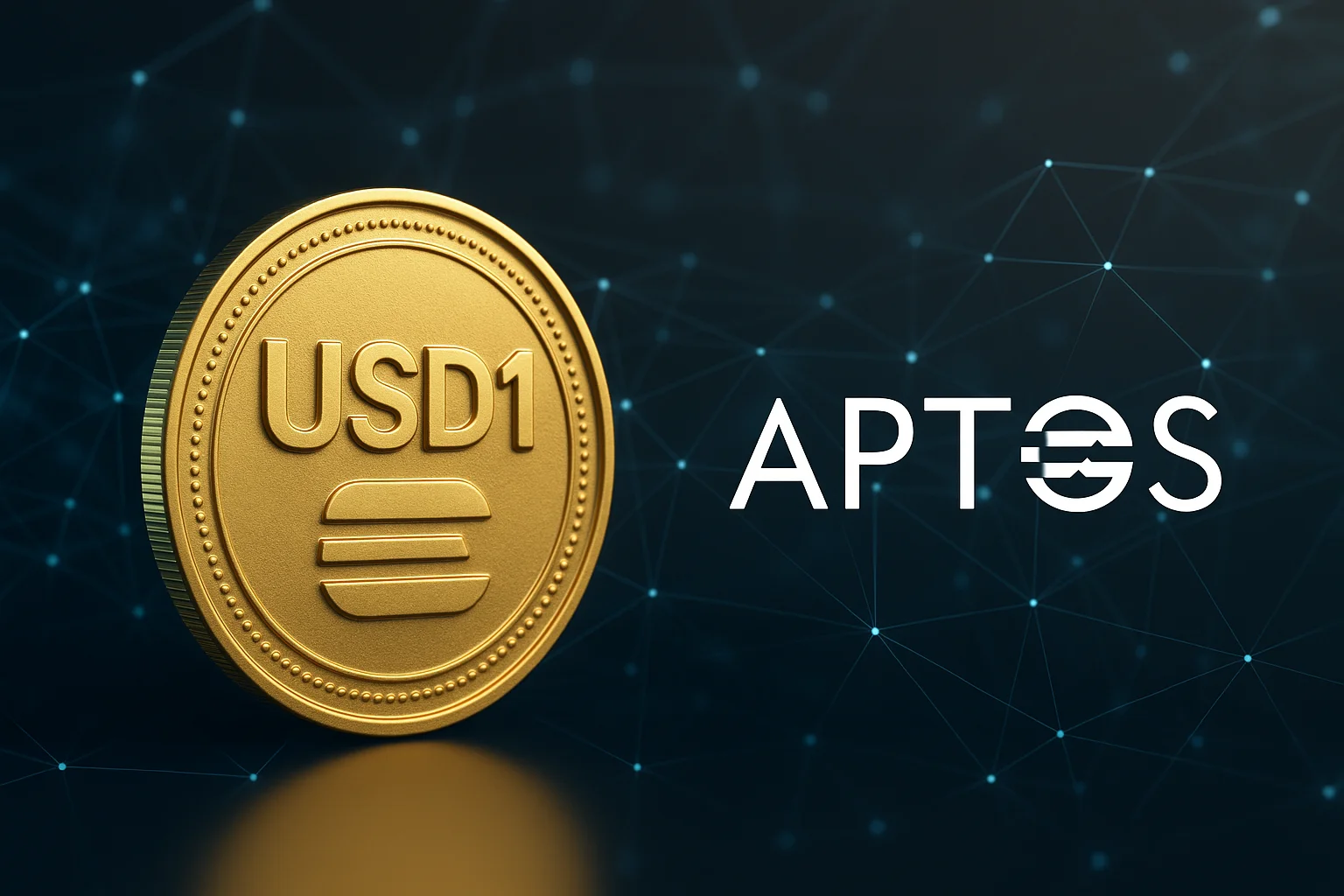
What is Internet Computer (ICP)?
While the internet is an integral part of our lives today, it's still controlled by large technology companies and operates through centralized servers. What if the internet were completely decentralized? The Internet Computer (ICP) is one of the most ambitious answers to this question. Driven by the vision of a decentralized internet, ICP is a Layer-1 blockchain network that aims to be an alternative to traditional cloud services. It offers developers not only smart contracts but also a Web3 infrastructure that runs at web speeds and is infinitely scalable. In short, ICP coin is not just a cryptocurrency; it's a well-established technology aimed at building the internet of the future. Let's take a detailed look at what an Internet Computer is, who developed it, and what it does.Definition and Origins of the Internet ComputerThe Internet Computer (ICP) network is a Layer-1 blockchain platform that emerged with the vision of a "world computer." Technically, it uses a new blockchain protocol resembling the Internet Protocol and operates in globally distributed data centers. Thus, it provides an infrastructure that can replace traditional web services. For example, while only certain parts of applications (such as token transactions) run on-chain on Ethereum or similar smart contract platforms, both the backend and frontend of applications on the Internet Computer can run entirely on the blockchain. This eliminates the need for centralized service providers such as cloud servers, web hosting, or database services when deploying web applications, as all components are provided by the ICP network. The Internet Computer project was initiated by cryptographer and entrepreneur Dominic Williams. Williams began working on this vision in 2016 by founding the nonprofit DFINITY Foundation in Zug, Switzerland. The foundation's goal is to re-decentralize the internet by developing revolutionary innovations in blockchain technology. The DFINITY team includes numerous researchers and engineers specializing in cryptography and distributed systems. For example, Dominic Williams, who collaborated with Ethereum's inventor Vitalik Buterin from an early age, brought on board individuals such as Andreas Rossberg, co-creator of WebAssembly. This strong technical team succeeded in launching Internet Computer as the mainnet in 2021.Its Place in the Layer-1 EcosystemInternet Computer is technically a layer-1 platform like Ethereum, Solana, and Avalanche, but it distinguishes itself with its design philosophy and features. When compared to other blockchain networks, ICP's differences stand out:Compared to Ethereum: Ethereum was the first major platform to introduce smart contracts to the world. However, transaction speeds are low and require Layer-2 solutions to operate efficiently. Furthermore, most Ethereum-based applications still rely on centralized servers for their interface or data storage. Internet Computer takes Ethereum's "World Computer" vision a step further. All aspects of applications, including the interface, can run on-chain, and the user experience is close to web speed. Furthermore, on Internet Computer, users don't pay gas fees. These fees are covered by "cycles" that developers earn by burning ICP tokens in advance. This ensures a seamless user experience, just like traditional web applications.Compared to Solana: Solana is another Layer-1 network known for its high transaction capacity and speed. However, even on Solana, not all large-scale web applications, especially the storage and web serving portions, are hosted on-chain. Internet Computer adopts a different model: The network is composed of parallel blockchains called "subnets." Each subnet operates with a specific number of nodes and executes smart contracts. Because these subnets communicate securely, adding new nodes to the ICP network is easy, and scaling is possible horizontally. As a result, ICP is not only as fast as Solana but also highlights its vision of unlimited scale with its subnetwork architecture. Furthermore, its on-chain storage capacity is significantly larger than Solana's; smart contracts can store large data directly in ICP.The History of the Internet Computer: Major MilestonesThe Internet Computer project has experienced many significant developments over the years, making significant strides in the blockchain world. Here are the milestones in the history of the ICP:2015-2016 - Project foundations: Inspired by the rise of Bitcoin and Ethereum, Dominic Williams came up with the idea of a "world computer." In 2016, he officially launched this vision by establishing the DFINITY Foundation in Switzerland. The goal was to develop a decentralized protocol that could replace traditional IT infrastructure in the future.2017-2018 - Funding and research: The DFINITY team created the first ICP (then DFN) token contract on Ethereum in January 2017 and held a seed funding round in February. Investors who supported the project during this early phase were allocated ICP at very low prices. In 2018, over $100 million was raised with the participation of major investors such as Andreessen Horowitz and Polychain Capital. This resource enabled the addition of world-renowned academics and engineers in the field of cryptography to the team and accelerated R&D efforts. Technical papers and prototypes published around the same time introduced ICP's innovative consensus mechanism and chain-key cryptography.May 2021 - Mainnet launch and ICP token launch: After years of work, the Internet Computer mainnet launched on May 10, 2021. The ICP token was launched the same day and was simultaneously listed on major exchanges such as Coinbase and Binance. Following the launch, ICP quickly entered the top 10 cryptocurrencies by market capitalization, even reaching as high as 4th at one point. The price also experienced significant volatility; reaching $630 on Coinbase and briefly jumping to $3,000 on some exchanges. According to official data, the all-time high price was recorded at approximately $750 on May 10, 2021. However, this sharp rise was short-lived, with the price dropping hundreds of dollars within a few days to more reasonable levels. The turbulent course of the ICP in these early weeks was remembered as one of the most rapid rises and falls in crypto history.Mid-2021 - Vision and reactions: The launch of the Internet Computer mainnet generated significant buzz in the blockchain industry. The project claimed to offer a decentralized alternative to the giant technology companies and cloud services known as "Big Tech." This ambitious vision received praise from many, but also drew criticism from some competing projects. Throughout 2021, the DFINITY team focused on strengthening community support by making the Internet Computer code open source and opening it to contributions from third-party developers.2022 - Technical developments and integrations: 2022 marked significant technical advancements for the Internet Computer network. Chief among these was Bitcoin integration. DFINITY researchers developed an advanced cryptographic signature method called threshold ECDSA, enabling smart contracts (canisters) on the ICP to interact directly with the Bitcoin network. This feature became active on the mainnet in December 2022, allowing smart contracts running on the ICP to send and receive Bitcoin without using any bridges. Similarly, steps were taken for Ethereum integration; the Chain Key technology, launched in 2022, laid the foundations for secure communication between the ICP and other chains. This year also saw the establishment of notable partnerships within the ecosystem. For example, in November 2023, a strategic collaboration was announced with SingularityNET, a company working in the field of artificial intelligence, to develop decentralized AI infrastructures on the ICP. With this development, Internet Computer aimed to take its Web3 vision to new heights, such as DeAI (Decentralized AI).2023-2024 - Growth and roadmap: By 2023, the Internet Computer network continued to grow, with nodes operating in hundreds of independent data centers worldwide. As of May 2024, the network reported approximately 1,500 nodes. The DFINITY Foundation announced plans to attract new projects to the ecosystem by launching a decentralized accelerator program called Olympus in its 2024 roadmap. Another development announced that year was the integration of EVM (Ethereum Virtual Machine), which will facilitate the interaction of canisters on the Internet Computer with Ethereum-compatible smart contracts.2025 - Several notable developments occurred in the ICP ecosystem in 2025: The ICP network increased its storage capacity per subnet to 2 TiB, enabling support for larger and more complex dApps. ICP also highlighted its vision of running on-chain AI applications (such as LLMs) and introduced the "Self-Writing Internet" paradigm. On the institutional side, institutional access was expanded with products such as the ICP ETP, which supports staking on the SIX Swiss Exchange. Furthermore, technical research on ICP's DAO governance systems (SNS) suggests that participation rates in SNS DAOs will increase rather than decrease. And technical research on ICP's DAO management systems (SNS) has revealed that participation rates in SNS DAOs remain stable or increasing over time, rather than declining.These milestones demonstrate that ICP has made significant strides in a short period of time. The intense anticipation and price fluctuations experienced at the 2021 launch were replaced by a more cautious development process in the following years. Following the extreme peak at launch, the ICP coin price trended downward throughout 2022, falling below $10 and losing up to 99% of its value by the end of the first year. Why is Internet Computer Important?The reason Internet Computer has attracted so much attention is both its vision and the technical innovations it offers. To better understand the points that distinguish it from other projects, let's examine the importance of ICP in detail:Decentralized "Cloud" InfrastructureICP offers a decentralized alternative to cloud services like AWS and Google Cloud, which form the backbone of the internet today. While data in traditional cloud services is stored on the servers of a few large companies, Internet Computer applications run on nodes in independent data centers scattered around the world. This eliminates the need for a single authority to control the system, making it more resistant to censorship and keeping user data more secure. For example, consider a social media application built on ICP; all its code and data are directly on the blockchain. This means it's not bound by the rules of a single company but is entirely managed by the community. This returns control of the internet to users and reduces dependence on tech giants.Unlimited On-Chain Storage CapacityInternet Computer's smart contracts, or canisters, have unprecedented on-chain storage capacity. While most blockchains struggle to store even a few kilobytes of data, ICP canisters can hold much larger amounts of data on-chain, and it's possible to expand capacity by adding new subnets if necessary. This means practically unlimited storage. Furthermore, the cost of storing data on ICP is quite low. For example, storing 1 GB of data on-chain on Ethereum costs tens of millions of dollars annually, while storing the same data for a year on Internet Computer costs only around $5. This significant difference clearly demonstrates ICP's storage efficiency. As a result, developers can easily implement applications that handle large amounts of data, such as high-resolution media files, on ICP without the need for centralized databases. High speed, low cost: Blockchain at web speedThe Internet Computer is designed to bring the user experience close to web speed. Queries to the network can receive a response in an average of 200 milliseconds, while state-changing transactions (updates) typically take 1-2 seconds to complete. These speeds are unusual in the blockchain world and are quite similar to the fluidity of traditional web applications. Furthermore, users of applications running on ICP do not need to pay gas fees. Transaction costs are covered by developers converting ICP tokens into computational credits called "cycles" and paying for them in advance. This model provides a completely free and seamless experience for users. For example, in a chat application running on ICP, sending messages costs are not charged to the wallet; the cost is paid by the application in the background. The combination of high speed and low user costs makes ICP an attractive platform for a wide audience.Motoko programming language and developer-friendly toolsThe DFINITY team developed a specialized programming language called Motoko to enable developers to easily develop applications on ICP. Motoko is a WebAssembly-based language optimized for the needs of the Internet Computer, and its syntax is quite simple. Technical issues like memory management and data persistence become much easier with Motoko. Furthermore, ICP supports languages like Rust and C++; developers can write canisters using compilers in their preferred language. Online IDEs, detailed documentation, and sample code libraries are also available to make the process more intuitive. Unlike ICP, the gas model prioritizes the developer and user experience. Users can access dApps through their browsers without installing any additional plugins, log in with Internet Identity with a single click, and use the application as a regular web service, even with blockchain processing running in the background. All these conveniences make ICP a friendly platform for both developers and users.Infrastructure for DeFi, GameFi, NFTs, and social mediaInternet Computer, being a general-purpose platform, offers a wide range of uses. DeFi applications can easily run on ICP, thanks to its high speed and low cost advantages; fast-transaction decentralized exchanges (DEXs) and lending protocols are being developed within the ecosystem. On the GameFi side, games and metaverse projects can leverage ICP's scalability to provide real-time services to thousands of users simultaneously. NFT marketplaces can also be implemented directly on ICP, and even NFT metadata or images can be stored on-chain. (In most networks, this data is stored in external storage like IPFS, while in ICP, it can be hosted entirely on-chain.)One of the most notable areas is social media and messaging applications. Several examples currently operate on the ICP network: OpenChat is the first instant messaging service running entirely on the blockchain. DSCVR offers content sharing on-chain, similar to Reddit. distrikt combines professional networking and microblogging functions with a hybrid of LinkedIn and Twitter. These three applications have already reached over 300,000 users combined. In addition, NFT showcases where artists can showcase their work, music and video sharing platforms, and even enterprise applications running on-chain are also taking their place in the ICP ecosystem.Internet Computer Developers and CommunityThe main force behind Internet Computer is the DFINITY Foundation and its founder, Dominic Williams. Williams is known as the originator and chief architect of ICP. Founded in Switzerland in 2016, the DFINITY Foundation is a non-profit organization with teams spread between Zurich and San Francisco. The foundation's primary goal is to develop and maintain the Internet Computer protocol through long-term research on blockchain technology. The team, led by Williams, includes world-renowned experts in cryptography, distributed systems, and programming languages. Key members include Timo Hanke, known for his work on Bitcoin mining efficiency; Andreas Rossberg, co-creator of WebAssembly; and renowned cryptographers Jan Camenisch and Jens Groth. This has enabled DFINITY to build one of the strongest technical teams in the industry. The foundation also transparently uses ICP tokens in its governance process. Major changes and protocol updates are submitted to a community vote through an on-chain governance system called the Network Nervous System (NNS). In other words, the ICP development team and the community are virtually inseparable; everyone involved in the NNS has a say in the project's governance.Today, Internet Computer is supported by a global community. From the project's early days, many independent developers, investors, and enthusiasts have joined this community. The DFINITY Foundation runs numerous programs to support this growth, including developer grants, hackathons, educational content, and forums. Especially after the mainnet launch in 2021, hundreds of teams began developing dApps on ICP. These include social media projects like OpenChat, DSCVR, and distrikt, as well as examples from diverse fields such as Entrepot (NFT marketplace), Sonic and InfinitySwap (DeFi applications), and Catalyze (crowdfunding). This rich ecosystem, created through community contributions, transforms ICP from a closed structure managed by a single company into a collaborative platform. Furthermore, thanks to the NNS, ICP token holders can directly participate in the network's governance; issues such as adding new features, creating subnets, or updating network parameters are brought to the community's attention.The DFINITY Foundation grows the ecosystem not only through its own developments but also through collaborations with other industry players. For example, the SingularityNET partnership announced in 2023 was a significant step toward running AI models on ICP and realizing the DeAI (Decentralized AI) vision. Furthermore, efforts are underway to build bridges with the Polkadot and Ethereum ecosystems and integrate with oracle providers like Chainlink. Such collaborations contribute to the Internet Computer becoming a more inclusive, interoperable, and compatible platform with the outside world.Frequently Asked Questions (FAQ)Below are some frequently asked questions and answers about the Internet Computer (ICP):What is the Internet Computer, and when was it released?: Internet Computer, or ICP for short, is a blockchain-based decentralized internet infrastructure project. Developed under the leadership of Dominic Williams, the project launched its mainnet in May 2021 and launched the ICP coin. Therefore, the ICP token's release date is 2021.Who developed the Internet Computer?: The Internet Computer project was founded by Dominic Williams and is developed and managed by the Switzerland-based DFINITY Foundation. Numerous researchers and engineers within the foundation are working on the development of the ICP protocol.What innovations does the Internet Computer offer?: ICP offers innovations that rival traditional cloud services. For example, the ability to run applications entirely on the blockchain (including the frontend), virtually unlimited on-chain storage capacity, and the ability to process transactions at web speeds are its key differences. It also provides a transaction-free (gas-free) experience for users – no end-user fees are charged for using dApps. Thanks to these features, ICP offers a unique infrastructure for Web3 applications.What does the ICP token do?: ICP is the native cryptocurrency of the Internet Computer network and serves several critical functions. First, it serves governance purposes: ICP token holders lock their tokens to create neurons and vote on network governance, thus participating in decisions about the network's future. Second, ICP provides computational fees (cycles); developers convert ICP into fuel called "cycles" to pay the transaction fees required to run the canisters. In this model, ICP tokens are slowly burned while applications are running. Finally, ICP also functions as a general store and transfer tool of value; it can be used for transferring value between users, investing, and similar purposes.Is Internet Computer suitable for investment?: Cryptocurrencies are generally high-risk assets. ICP has also experienced volatility, reaching high valuations upon its launch and then experiencing significant declines. While Internet Computer's vision and technical foundations are strong, you should consider your personal risk tolerance when making an investment decision. If you believe the project will be successful in the long term, you can consider adding the ICP token to your portfolio, but it's important to do your own research and accept potential losses. Remember, crypto markets are full of uncertainty, and a balanced portfolio approach is generally safer than a single project.What are the Internet Computer's use cases?: The ICP network has a wide range of use cases. DeFi (decentralized finance) applications can be run on ICP (e.g., lending protocols, DEXs). GameFi and metaverse projects can offer real-time experiences with ICP's fast and scalable architecture. NFT marketplaces and digital collectibles platforms can be built on ICP; even NFT data storage can be done on-chain. Social media and messaging applications are perhaps one of the most notable use cases for ICP.Follow the JR Kripto Guide series for the latest developments in the Internet Computer network and Web3 world.
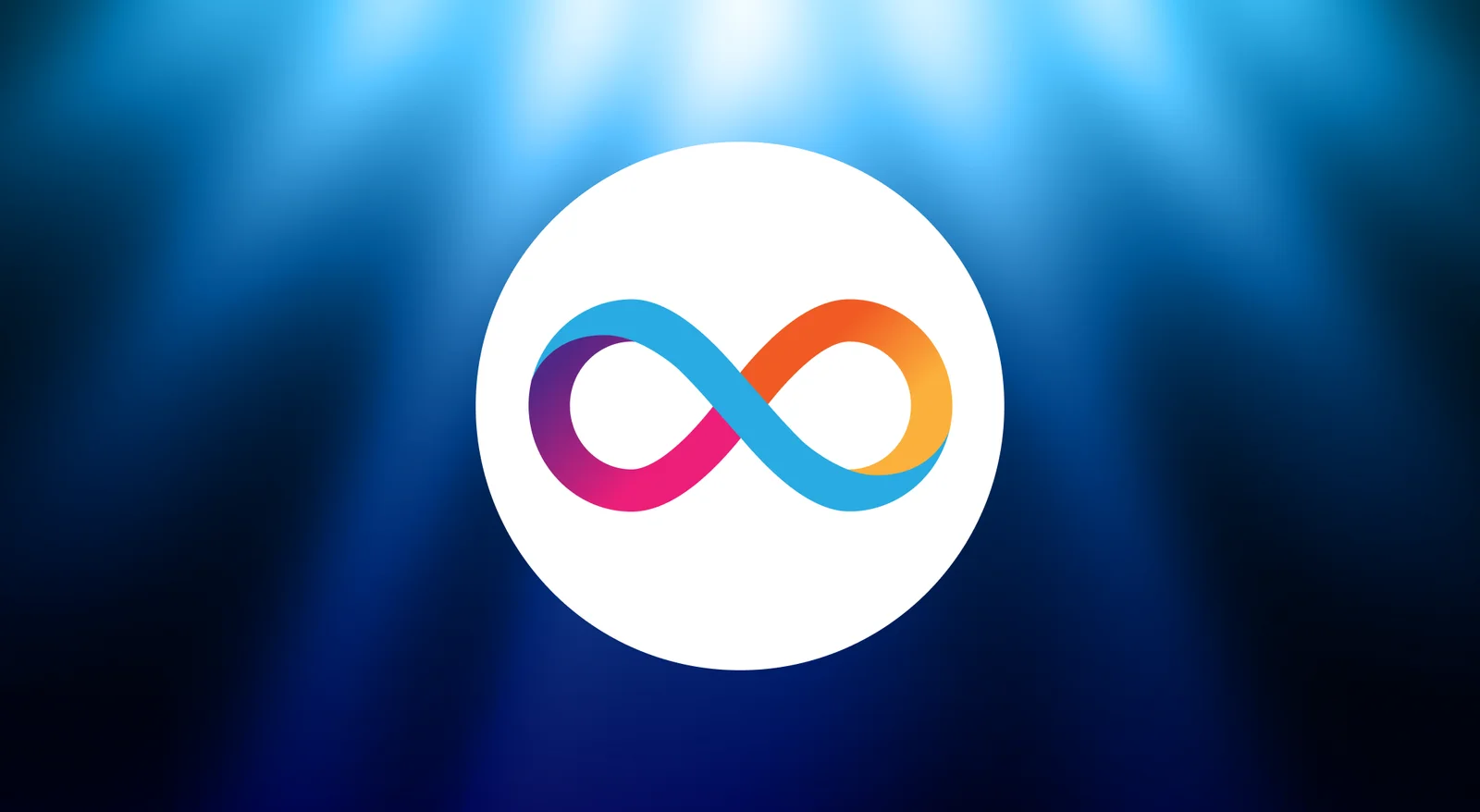
SEC Approves New Altcoin: Binance Also Double Lists
The Division of Corporate Finance of the U.S. Securities and Exchange Commission (SEC) has made a historic decision regarding the decentralized physical infrastructure network (DePIN) project DoubleZero. The agency issued a "Letter of No Action" for the company's 2Z token, declaring that utility token transfers will not be considered securities transactions within the specified limits. Accordingly, DoubleZero's 2Z token will not be classified as a security and will not be subject to registration. However, the SEC emphasized that the decision was made solely based on the information DoubleZero provided and that different circumstances could lead to different outcomes.SEC Issues "Non-Intervention" LetterThis decision marks the SEC's first official "non-intervention" stance towards the crypto industry. Previously, the SEC considered most altcoins to be securities, and with the new administration, it has begun to adopt a more innovative approach. The DoubleZero decision also demonstrates that the agency has begun working more closely with the industry as part of its "Project Crypto" initiative. DoubleZero aims to offer blockchain node operators faster and more direct connections than the public internet via its high-performance fiber network. The system works by integrating unused fiber lines into the network. Participants are rewarded with 2Z tokens for the service they provide.Hester Peirce: "The market must decide"SEC Commissioner Hester Peirce viewed the published letter as a step toward fostering innovation. Peirce emphasized that the SEC's purpose is not to regulate all economic activity, but to oversee securities markets:"DePIN projects organize real-world services like storage, bandwidth, or energy into distributed structures. Here, tokens serve as rewards that incentivize infrastructure deployment rather than serve as investment contracts. Blockchain technology cannot reach its full potential if we try to squeeze all activities into existing financial regulations."Peirce stated that markets should determine the success of such initiatives.The DoubleZero Foundation emphasized that this decision, which follows a four-month review process, represents a significant turning point for the US digital asset sector. Foundation co-founder Austin Federa commented on the development:“This is a milestone not only for DoubleZero, but for all US crypto entrepreneurs. The SEC has recognized the functional nature of the 2Z token, opening up space for compliant, service-oriented innovation. This decision demonstrates that innovation can remain in the United States and grow unabated.”Dual Listing from BinanceImmediately following this critical regulatory development, Binance, the world's largest cryptocurrency exchange, made a significant announcement. The company announced that it will list DoubleZero's 2Z token on futures with up to 50x leverage. 2Z will be available for spot trading on Binance Alpha on October 2, 2025, and for leveraged trading on Binance Futures on the same day. DoubleZero also announced that the mainnet (beta) will launch this week. The project completed a $28 million token sale round led by Multicoin Capital and Dragonfly Capital in March.

SEC Puts Brakes on Company That Announces Bitcoin, Ethereum, and Solana Acquisition
The U.S. Securities and Exchange Commission (SEC) temporarily suspended trading in QMMM Holdings shares on September 29th following extraordinary price fluctuations. The Hong Kong-based company's announcement that it would create a $100 million cryptocurrency treasury sent its share price soaring; the shares quickly gained over 1,000%, catching regulators' attention.QMMM on SEC's radar: "Suspicious market activity" warningQMMM is traded on Nasdaq through a Cayman Islands-based holding company. The company's announcement of a large-scale investment in Bitcoin, Ethereum, and Solana has generated strong demand from individual investors. Analysts believe this development further demonstrates how the diversification of traditional companies into cryptocurrencies can cause sharp market volatility.The SEC announced that QMMM shares have been suspended until October 10th. The institution stated that manipulations made by "unidentified individuals" on social media unusually inflated share volume and price, increasing the likelihood of creating artificial demand. QMMM's shares, which were below $12 at the beginning of September, skyrocketed to $200 in the last week of the month. Experts say this scenario is reminiscent of manipulation tactics known as "pump and dump." The SEC and other US financial regulatory agencies (especially Finra) note that similar situations have increased recently, with unusual trading observed in some company shares ahead of crypto asset announcements.Investors are uneasy, the company remains silentQMMM has yet to issue an official statement. The company's shift from digital advertising to crypto assets earlier this year was interpreted as the first step in a strategic transformation. However, uncertainty prevails among investors following the trading halt.Market analysts suggest that such developments could temporarily curb the trend of institutional crypto treasury. The shift towards cryptocurrencies by mid-sized companies quickly creates significant individual buying waves; However, this also accelerates regulatory scrutiny.Institutional crypto adoption on the riseDespite this negative outlook, institutional crypto adoption continues to grow. According to current data, approximately 200 publicly traded companies worldwide hold over $112 billion in digital assets on their balance sheets. These companies' Bitcoin reserves exceed 1 million BTC, representing 4.7% of the total supply. Companies' total holdings of altcoins like Ethereum and Solana have also surpassed $10 billion. Analysts agree that while the QMMM example may create uncertainty in the short term, it will likely increase the use of cryptocurrencies in corporate treasuries in the long term. In addition to Bitcoin and Ethereum, alternatives like Solana are also expected to gain a greater presence in institutional portfolios.While the SEC's temporary trading ban on QMMM has caused market volatility, institutional interest is expected to remain strong. With tightening regulatory oversight in the coming period, companies may be required to conduct their crypto investments in a more transparent and controlled manner.

Kazakhstan Picks Surprise Altcoin for Its First Crypto Reserve Fund
Kazakhstan has taken a step toward ushering in a new era for crypto ventures in Central Asia. The country has officially announced the Alem Crypto Fund, its first crypto reserve fund. The fund aims to facilitate long-term investments in digital assets and support the country's technology-driven economy. The project was created by the Ministry of Artificial Intelligence and Digital Development and is managed by the Qazaqstan Venture Group within the Astana International Financial Center (AIFC).What is the purpose of the crypto fund?The Alem Crypto Fund's primary goal is to transform cryptocurrencies not only as investment instruments but also as a state strategic reserve. This allows the fund to play a role in managing the country's national savings and shaping financial strategies for the digital age. Kazakhstan's Deputy Prime Minister and Minister of Artificial Intelligence and Digital Development, Zhaslan Madiyev, described the fund's launch as "a historic step forward in technological finance."The fund's most notable move was choosing Binance Kazakhstan as its strategic partner. The local subsidiary of Binance, one of the world's largest crypto exchanges, operates under a license in the country. Alem Crypto Fund made its first investment in BNB, the native token of the Binance ecosystem. BNB is a crypto asset that stands out for its ability to pay transaction fees, participate in network management, and be used in various services.Binance Kazakhstan General Manager Nurkhat Kushimov stated that this development is critical not only for Binance but also for Kazakhstan's role in the crypto world. Kushimov said, "The selection of BNB as the first investment asset demonstrates the trust in the Binance ecosystem. This decision opens a new chapter in the wider acceptance of crypto in the country."BNB's global standing also enhances the importance of this investment. Considered one of the world's largest crypto assets with a market capitalization exceeding $138 billion by 2025, BNB has long demonstrated consistent and strong performance. This move by Kazakhstan reflects the country's desire to create a transparent and secure crypto market while also demonstrating its efforts to integrate state policies with global technologies. The fund's activities are conducted within the legal framework provided by the Astana Financial Services Authority (AFSA). This ensures the security of investors while ensuring the state maintains legal grounds for digital asset investments. This is important not only for the fund but also for enhancing Kazakhstan's credibility with international investors.Kazakhstan has recently accelerated its efforts towards digital assets. The country recently launched Central Asia's first Bitcoin ETF. Now, it is launching a more comprehensive initiative with a crypto reserve fund. Experts believe these developments could make Kazakhstan one of the region's crypto hubs.The existence of the Alem Crypto Fund is considered critical for attracting large investors, strengthening national reserves, and consolidating the country's position in the global asset market. Government support and collaboration with a robust ecosystem like Binance could make Kazakhstan a reliable digital financial hub for long-term investments.

XRP Comment and Price Analysis - September 29, 2025
XRP Technical AnalysisAnalyzing XRP chart on a daily time frame, we see that the ascending channel pattern is still valid and working well. The price of the coin is trying to recover following a pullback starting around the level $3.42. The price is trading near the level at $3.01 currently and has approached key resistance levels again.Short-term resistance levels ahead are $2.93 and $3.13. Above these levels, the price has the potential to move towards the upper border of the channel again — $3.42–$3.50.According to a bearish scenario, the first strong support below is the range between the levels $2.85–$2.64. If this support level is lost, then the range $2.44–$2.38 and the lower border of the channel would be a potential reversal area. In case the channel pattern gets broken, sell pressure might get intense. Falling Wedge Structure Summary:Current price: $3.01Key resistances: $2.93 and $3.13Support zone: $2.85–$2.64Upper border of the channel: $3.42–$3.50Last defense line: $2.44–$2.38These analyses, not offering any kind of investment advice, focus on support and resistance levels considered to offer trading opportunities in the short and medium term according to the market conditions. However, traders are responsible for their own actions and risk management. Moreover, it is highly recommended to use stop loss (SL) during trades.
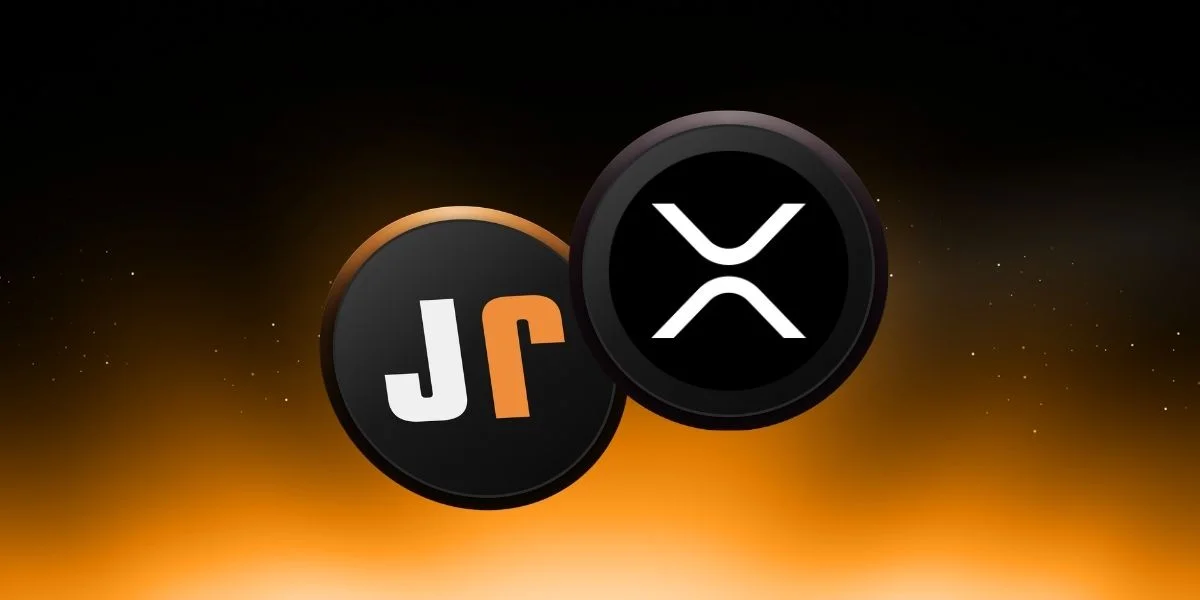
ONDO Comment and Price Analysis - September 29, 2025
ONDO Technical OutlookAnalyzing ONDO on the 4-hour timeframe, we see that the coin is moving in a sideways range. ONDO has been trading between certain levels for some time, forming a narrowing pattern. This shows that buyers and sellers are stepping in clear zones.ONDO is currently trading around the level $0.87, and the area between the levels $0.86–$0.87 stands as a strong support. The price has a good chance to move back toward the mid-range and upper resistance levels as long as this support area holds.We should be following the first target area $0.91–$0.92 in case of upside moves. ONDO could test the $0.99–$1.00 area if the first target is reached. Holding above $1.00 would be a strong bullish signal, opening the way to $1.05 and $1.11.The first defense line below is the key support level $0.86. A pullback toward $0.80 and even $0.72 becomes possible if the price closes below this key support. ONDO Range Area Summary:ONDO is still in a clear range. Holding above $0.86 keeps the outlook positive, while a breakout above $1.00 would be the strongest signal for a new uptrend.These analyses, not offering any kind of investment advice, focus on support and resistance levels considered to offer trading opportunities in the short and medium term according to the market conditions. However, the user is responsible for their own actions and risk management. Moreover, it is highly recommended to use stop loss (SL) during the transactions.

As BTC and ETH Exodus Continues, SOL, ADA, SUI, and XRP Attract Funds
Crypto asset investment products faced severe selling pressure last week. According to CoinShares data, a total outflow of $812 million was driven by strong macroeconomic data from the US and weakening expectations for an interest rate cut. However, inflows totaling $39.6 billion since the beginning of the year indicate that the market still maintains the potential to approach last year's record levels.Significant outflow from cryptocurrenciesCrypto asset investment products saw an outflow of $812 million last week. According to CoinShares' latest report, this decline is linked to weakening expectations for an interest rate cut following strong macroeconomic data from the US. Nevertheless, total inflows since the beginning of the year remained at $39.6 billion, approaching last year's record.US-based products led the way with outflows exceeding $1 billion. In contrast, the picture in Europe is more positive: Switzerland recorded net inflows of $126.8 million, Canada $58.6 million, and Germany $35.5 million. This suggests that the negative sentiment was largely confined to the US. Which altcoins saw activity?On an asset basis, Bitcoin was the most affected, with an outflow of $719 million. Notably, there was no significant inflow into short-Bitcoin assets, suggesting that the selling pressure may not be persistent. The situation is similar for Ethereum: the weekly outflow of $409.4 million nearly halted the strong inflows of $12.1 billion since the beginning of the year. Meanwhile, altcoins displayed a different outlook. Solana led the week with $291 million in inflows, reaching a total of $628 million since the beginning of the month. Interest in Solana is rapidly increasing ahead of the anticipated ETF approvals in the US. XRP also saw an inflow of $93.1 million, bringing inflows to $1.6 billion since the beginning of the year. Although smaller, Sui ($2.9 million), Cardano ($1.3 million), and Chainlink ($3.5 million) saw inflows. However, activity in assets like Litecoin and Cronos remained limited.Despite robust inflows, $83.5 million in outflows from multi-asset products was notable. This category lost more than $118 million in September.On the fund provider side, the largest outflow came from Fidelity's Wise Origin Bitcoin fund. The $738 million outflow reflected the general pressure in the US market. Grayscale lost $300 million, Bitwise lost $169 million, and ARK Invest lost $123 million, while Switzerland-based 21Shares saw $93 million in inflows.Macroeconomic data, interest rate expectations, and ETF decisions are expected to continue to drive interest in crypto funds for the remainder of the year.
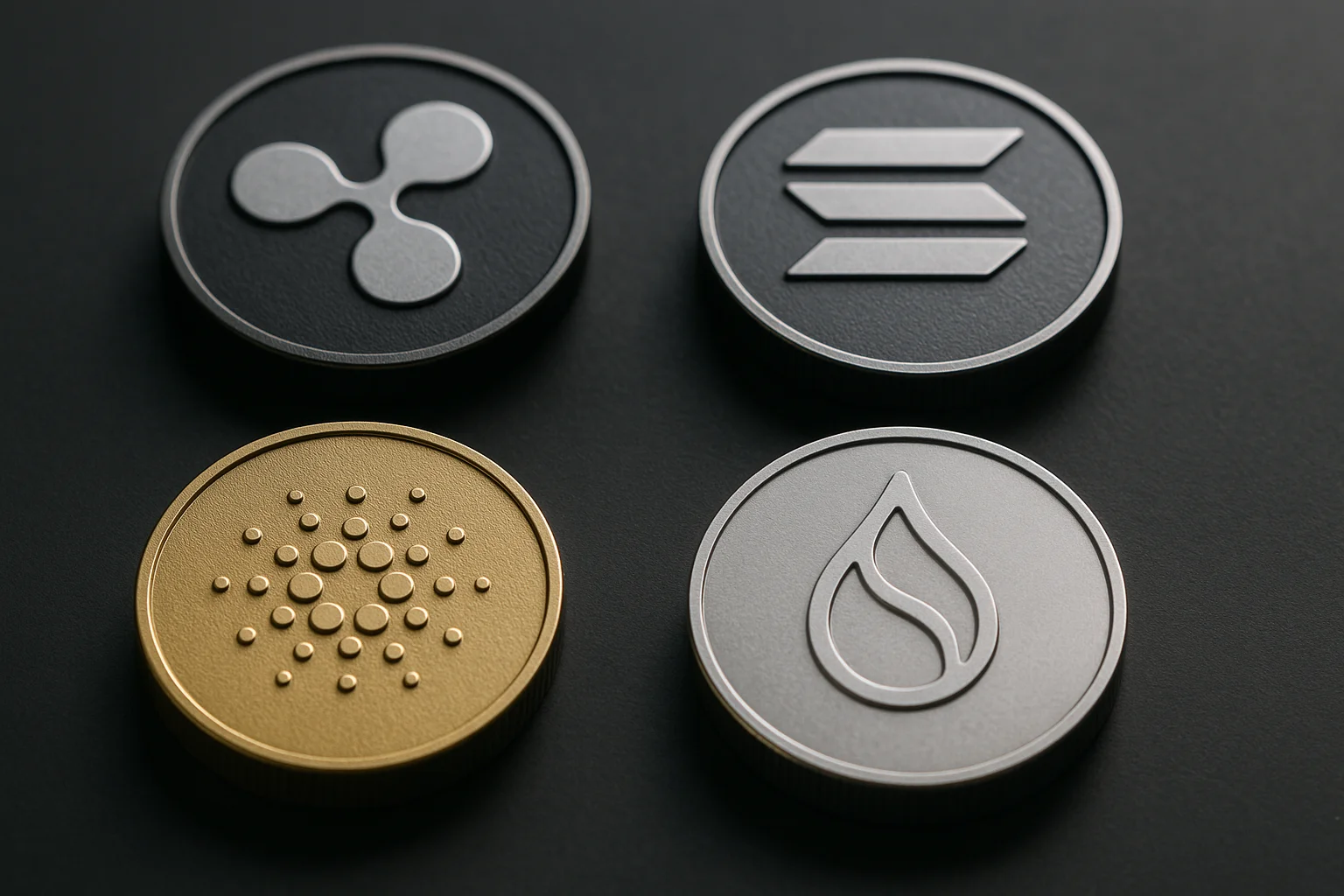
ARB Comment and Price Analysis - September 29, 2025
ARB/USDT Technical AnalysisAnalyzing the ARB chart on a weekly timeframe, we observe that the descending channel structure remains intact. The price recently moved up to test the upper border of the channel but failed to hold, resulting in renewed downward pressure. As long as no breakout occurs, the price is likely to continue trading within the boundaries of the channel. Falling Wedge Formation ARB is currently trading around $0.4091. It recently surged to $0.4515 but was unable to sustain the move and reversed downward. This level now stands as the most critical short-term resistance. If the price can close above $0.4515, ARB may target the next resistance levels at $0.5046 and $0.5475. A confirmed breakout would require a strong move above the range of $0.66–$0.71. Once this range is surpassed, we can begin to talk about the mid-to-long-term technical target of the channel formation: $2.42.In a bearish scenario, $0.3558 is the first key support to watch. A breakdown below this level could lead to a retest of $0.33, and possibly the lower border of the channel around $0.28.Summary:ARB continues to trade within a descending channel.A daily close above $0.4515 is critical for short-term trend reversal.Resistance levels: $0.5046 → $0.5475 → $0.66–$0.71Support levels: $0.3558 → $0.33 → $0.28Mid-to-long-term technical target: $2.42 (if the channel breaks upward)These analyses, not offering any kind of investment advice, focus on support and resistance levels considered to offer trading opportunities in the short and medium term according to the market conditions. However, the user is responsible for their own actions and risk management. Moreover, it is highly recommended to use stop loss (SL) during the transactions.

October is Critical for SOL, ADA, LTC, and DOGE: 16 Crypto ETF Applications Nearing Finalization
The US Securities and Exchange Commission (SEC)'s decisions in October could be a critical turning point for the crypto market. As the deadlines for 16 different crypto exchange-traded fund (ETF) applications approach throughout the month, investors are debating whether a new altcoin rally is imminent.Litecoin, Solana, XRP: ETF applications have been filed for numerous altcoins.The first application to stand out on the calendar is decentralized exchange Canary's Litecoin ETF. The deadline for a final decision is October 2nd. Grayscale's request to convert its Solana and Litecoin trusts into an ETF will then be considered on October 10th. Later in the month, WisdomTree's XRP ETF application will be on the table. Bloomberg ETF analyst James Seyffart notes that the SEC could announce its decisions before the deadlines. This situation is adding uncertainty and excitement to the markets. Investors are particularly keen on popular altcoins like Solana, XRP, Litecoin, and Dogecoin. Bitfinex analysts predict that the approvals could usher in a new altcoin season by offering safe and regulated investment opportunities. ETF expert Nate Geraci says October is "a huge period for the crypto ETF market." However, the absence of applications from major players like Fidelity and BlackRock suggests that this wave could be a significant, though not yet definitive, development. Signs of a softening of the SEC's approach are also notable. With the new regulation announced on September 17, listing standards for commodity-based trust funds were updated. This step could shorten the spot crypto ETF approval process. Bloomberg's Seyffart describes this move as "the precursor to a wave of launches," while his colleague Eric Balchunas states that more than 20 crypto assets with futures on Coinbase could be included in the spot ETF process. Indeed, Hashdex's recent expansion of its portfolio to include XRP, Solana, and Stellar demonstrated the market's rapid adaptation. Major exchanges such as Nasdaq, NYSE Arca, and CBOE BZX have also updated their applications to adapt their existing Bitcoin and Ethereum ETFs to the new standards.However, criticism is not without its drawbacks. SEC Commissioner Caroline Crenshaw argues that the new regulations could bypass some key investor protections. Crenshaw stated that these products are "new and untested" and could increase risks for small investors.However, optimism prevails among market participants. Investors believe October could be a "watershed month" for crypto ETFs. Approvals could facilitate access to the spot market, generating a new influx of capital into altcoins. However, rejected applications or delayed decisions carry the potential to disappoint expectations.Consequently, October appears poised to be a test case for crypto ETFs. A succession of approvals could see significant market momentum; But cautious experts caution that this alone doesn't guarantee a sustained altcoin rally. All eyes are now on the SEC's decisions.
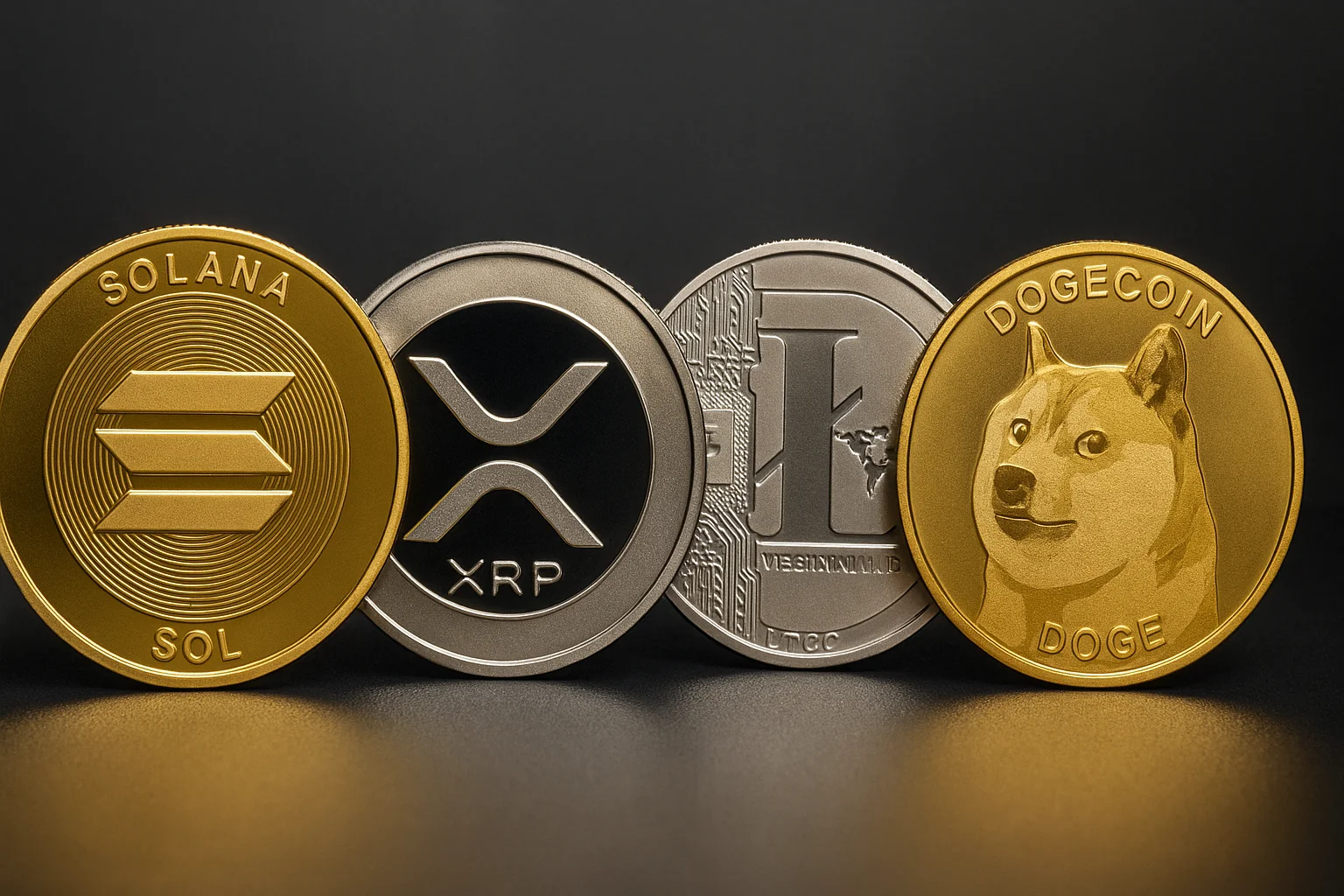
CZ-Backed Aster Reaches DeFi Top with $25 Million in Revenue
Aster has recently become a prominent name among decentralized derivatives exchanges. According to DefiLlama data, the platform generated over $25 million in trading fees in the last 24 hours, reaching the top of the daily revenue rankings. This performance allowed it to outperform its competitors, Hyperliquid and other perpetual DEXs (decentralized exchanges focused on perpetual futures). Hyperliquid earned around $3.17 million in revenue during the same period, ranking fifth.Aster Overtakes HyperliquidAster's rise is no coincidence. The platform's token launch, which took place on September 17th, attracted significant attention. Immediately following the launch, Binance co-founder Changpeng Zhao (CZ) posted social media posts, further fueling interest in the project. Zhao stated that Aster, despite competing with Binance, contributes to the BNB ecosystem and expressed his support for the project. He also emphasized that YZi Labs (formerly Binance Labs) holds a minority stake in the company. Data shows that Aster is growing rapidly not only in fee revenue but also in trading volume. With $199.9 million in spot trading volume in the last 24 hours, it ranked 13th. While Hyperliquid is ahead in terms of volume, it's noticeable that Aster is rapidly approaching. The platform, particularly with its "hidden order" feature, allows users to trade invisibly in the market. This distinguishes it from its competitors with transparent order books.Aster's roots are also noteworthy. Formerly known as APX Finance, the project merged with Astherus in March and rebranded. This merger combined its robust liquidity infrastructure with expertise in derivatives. The platform also offers multi-chain support; while initially focused on BNB Chain, it is expanding into different ecosystems with integrations to Ethereum, Arbitrum, and Solana.ASTER token on the riseToken volatility is noteworthy. The ASTER token quickly gained over 2,000% from its launch price of $0.08, reaching $2.42. Currently trading at $1.95, an 8% increase, the token has reached a fully diluted market capitalization of $15.1 billion. However, on-chain data raises questions about token distribution. Analysis suggests that the majority of the supply is concentrated in a few wallets. The fact that the largest wallet holds 44.7% of the total supply has sparked discussions about centralization. Although the distribution plan allocates significant resources to ecosystem development and airdrops, such a concentration is attracting investor attention.With its billions of dollars in volume and user base in a short time, Aster is reshaping the balance of power among derivatives exchanges. The support provided by YZi Labs and the trust instilled by CZ appear to have laid a strong foundation for the project for now. However, whether this momentum will be permanent will become clear with the interest the market will show in the coming months.

APT Comment and Price Analysis - September 26, 2025
APT Technical OutlookAccording to the chart, the falling channel is still valid. APT lost the support level at $4.06 and started moving toward the lower border of the channel, leading to a weak outlook in the short term.The price is currently trading around the level $3.94. Trading below $4.06 increases the downward risks. The level at $3.74 stands as the first station; below it, $3.45 and $3.16 would be on the table. Falling Channel Formation The level $4.06 can work as a key level in terms of upside moves. If the price can break above it, then it may have the potential to surge to the levels at $4.44 and $4.93. The price needs to exceed the range $5.10–$5.60 to confirm the actual breakout. If this happens, then the trend reversal may speed up.Summary:Current price: $3.94Trading below $4.06 may open the way for support levels at $3.74 → $3.45 → $3.16Trading above $4.06 may pave the way for $4.44 followed by $4.93The range $5.10–$5.60 is crucial for trend reversalThese analyses, not offering any kind of investment advice, focus on support and resistance levels considered to offer trading opportunities in the short and medium term according to the market conditions. However, the user is responsible for their own actions and risk management. Moreover, it is highly recommended to use stop loss (SL) during the transactions.

SUI Commentary and Price Analysis - September 26, 2025
SUI Technical AnalysisAnalyzing SUI , we can see the narrowing symmetrical triangle formation. The price has been trapped between both the descending trendline from up and the ascending trendline from below. Such formations are usually known to trigger sharp price movements in the direction of the brekout.SUI is currently trading around the level $3.19. The lower border of the channel is $3.10, being a key support level in the short term. Maintaining this support level means keeping the formation valid.The first resistance zone is between the levels $3.38 - $3.55 according to a bullish scenario. We can expect the price to move toward the level $4.16 if it manages to hold above the resistance zone. Other technical targets above are $4.75 and $5.37.In case the price closes below the level $3.10, support level $2.93 followed by the range $2.54 - $2.41 would come into play. In case of deeper correction, we should be following such levels as $2.06 and $1.60. Narrowing Triangle Structure Levels to followSupport levels: $3.10 → $2.93 → $2.54 – $2.41Resistance levels: $3.38 – $3.55 → $4.16 → $4.75 → $5.37These analyses, not offering any kind of investment advice, focus on support and resistance levels considered to offer trading opportunities in the short and medium term according to the market conditions. However, the user is responsible for their own actions and risk management. Morover, it is highly recommended to use stop loss (SL) during the transactions.
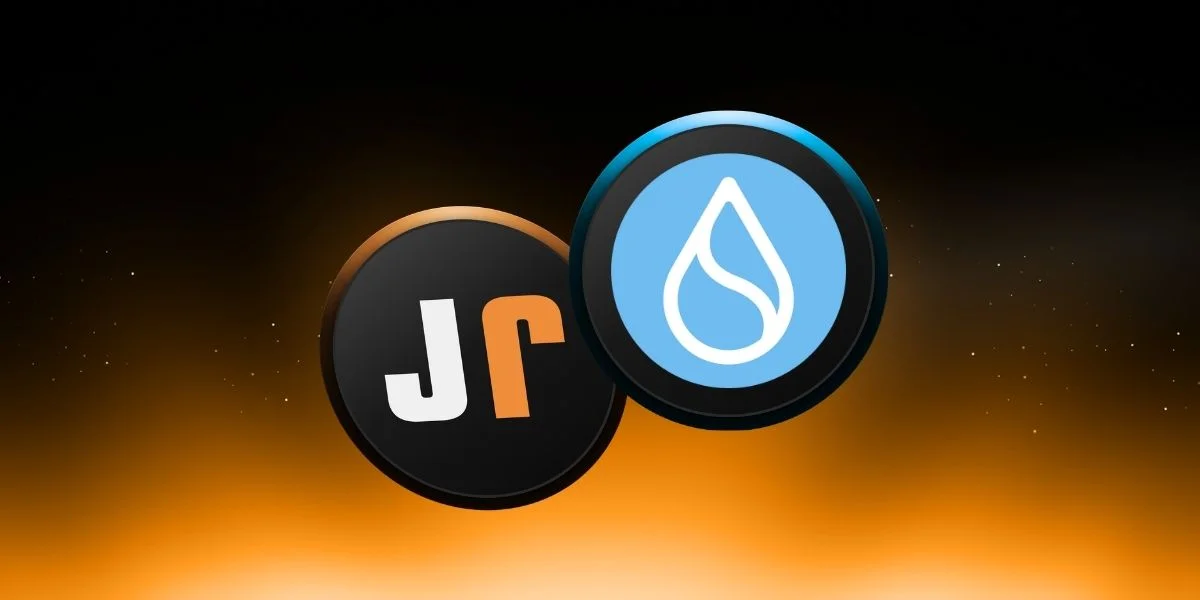
What is Polygon (POL)?
Polygon (POL) is a multi-chain Layer-2 blockchain platform that aims to solve the scalability problems of the Ethereum network. Initially known as Matic Network, this project emerged in 2017 as a solution to the high transaction fees and slow speeds on Ethereum. Polygon's goal is to process transactions on sidechains outside of Ethereum, thus offering lower gas fees and higher transaction speeds. This approach allows the Polygon network to leverage Ethereum's security and ecosystem advantages while providing an environment where users can conduct transactions much faster and cheaper. This is one of the reasons for its rapid popularity within the Ethereum community. The Polygon network is currently used in a wide range of applications, from DeFi protocols to NFT platforms and large enterprise projects, and has gained a significant place in the crypto world.Let's explore questions like what Polygon is, what POL coin is, what Polygon coin does, and explore the Polygon ecosystem projects together.Definition and Origins of PolygonPolygon is a scaling solution developed for Ethereum. At its core is the Plasma infrastructure and a Proof-of-Stake (PoS)-based sidechain. This means it receives transactions from Ethereum, processes them much faster and more cheaply on its own sidechain, and connects the results back to the main Ethereum chain. This allows it to benefit from Ethereum's security while offering users low transaction fees and rapid confirmation.Over time, it evolved from a single sidechain to a multi-chain ecosystem supporting diverse scaling solutions. Today, Plasma chains, sidechains, and recently developed Zero-Knowledge Rollup technologies are all part of the same ecosystem. Thanks to this diversity, Polygon offers flexible solutions that can adapt to the needs of different projects, making its vision of becoming "the Internet of Ethereum" increasingly visible. Polygon architecture. The project was initially founded in 2017 as an India-based startup called Matic Network. The founding team consisted of four blockchain veterans: Jaynti Kanani, Sandeep Nailwal, Anurag Arjun, and Mihailo Bjelic. This team came together with the vision of providing a solution to the scalability and usability issues facing Ethereum. Prior to the project, Jaynti Kanani and Sandeep Nailwal had a deep understanding of Ethereum's technical limitations thanks to their experience in the Ethereum developer community. Their goal in designing Polygon was to improve the user experience while maintaining Ethereum's security and decentralized structure, while also providing a scalable Web3 infrastructure for developers. Launched under the name Matic Network, the project launched the MATIC token in an Initial Exchange Offering (IEO) on Binance in 2019 and successfully launched its mainnet on Ethereum in May 2020. Initially operated by the Matic Foundation, network validators were gradually transferred to third-party validators throughout 2020, increasing the network's decentralization.In February 2021, the project rebranded itself as Polygon as part of its vision to expand its scaling solutions. The transition from Matic Network to Polygon signified the project's expansion. During this period, the Polygon team announced plans to build a platform that integrates different scaling technologies beyond its existing PoS sidechain. For example, in 2021, Polygon invested in zero-knowledge proof (ZK proof) technologies, acquiring the zk-rollup project Hermez and incorporating it into its own organization under the name Polygon Hermez. That same year, it acquired another ZK project, Mir Protocol (later known as Polygon Zero). These steps signaled Polygon’s long-term adoption of zkRollup technologies and its goal of creating a multi-chain ecosystem.Polygon's History: Key MilestonesSome key milestones in the development of the Polygon (formerly Matic Network) project can be summarized as follows:2017 - Establishment: The project was launched under the name Matic Network. Spearheaded in India by Jaynti Kanani, Sandeep Nailwal, and Anurag Arjun, the project aimed to address Ethereum's scalability and high fees. Fourth co-founder Mihailo Bjelic joined the team later, and the project gained international recognition.2019 - Launch and Mainnet: Polygon launched in 2019. Matic Network's native cryptocurrency, MATIC coin, was launched. The project raised funds through an IEO on Binance Launchpad in April 2019 and launched its testnets later that year. The Polygon (Matic) mainnet was officially launched on Ethereum in May 2020. Initially, all validators on the network were controlled by the Matic Foundation, but throughout 2020, external validators were gradually incorporated, making the network more decentralized.February 2021 - Transformation to Polygon: The project name was changed to Polygon. This rebranding announced Polygon's vision of expanding beyond its existing PoS sidechain solution to become a platform supporting multiple scaling solutions (Plasma, Optimistic Rollup, zkRollup, etc.). During this period, Polygon began working to enable developers to utilize different scaling tools based on their needs, without being limited to a single sidechain. With the name change, the Matic name remained for the token, but Polygon became the network's brand identity.2021 - Bull season and price peak: Usage on the Polygon network exploded during the cryptocurrency bull market of 2021. Driven by intense interest in the DeFi and NFT spaces, the MATIC token price reached an all-time high by the end of the year. In December 2021, MATIC peaked at around $2.92. During this period, Polygon became a popular alternative for users looking to avoid the high fees on Ethereum. This success was also fueled by the integration of leading DeFi protocols like Aave, Curve, and SushiSwap into Polygon, and the number of users reaching millions. The POL coin price is trading at $0.21 as of September 2025. 2022 - Major partnerships and adoption: 2022 was a year of corporate partnerships for Polygon. Meta (Facebook) announced that it would integrate Polygon on its Instagram platform to allow users to mint NFTs. Reddit launched the Avatar NFT project, which has led to the creation of more than 3 million NFT wallets on Polygon. Starbucks announced that it would use Polygon to transform its loyalty program into an NFT-focused platform. Nike built its digital collectibles platform .Swoosh using Polygon's infrastructure. Also in 2022, Disney selected Polygon for its accelerator program and began working with it on potential Web3 projects. Many global brands and companies, including Adobe, Coca-Cola, Adidas, Prada, Stripe, and DraftKings, announced their collaboration with Polygon on Web3 and NFT strategies during this period. Thanks to these major partnerships, Polygon gained significant momentum in terms of mainstream adoption, and the value of the MATIC token saw periodic increases due to this news. March 2023 - Polygon zkEVM launches: The Polygon team launched its long-term zkEVM (Zero-Knowledge Ethereum Virtual Machine) project in beta on the mainnet in March 2023. Polygon zkEVM is a zero-knowledge proof Layer-2 solution that offers the same smart contract capabilities as Ethereum, but bundles transactions into a zk-Rollup and sends them to Ethereum. This development is a significant milestone demonstrating Polygon's technological innovation. Thanks to zkEVM, Polygon not only allowed developers to run their applications as they do on Ethereum, but also achieved high security and scalability through zero-knowledge proofs. The March 2023 launch was announced with Ethereum founder Vitalik Buterin making the first transaction, and it attracted significant attention from the crypto community. June 2023 - Polygon 2.0 and POL token: In mid-2023, Polygon Labs announced its Polygon 2.0 vision, a comprehensive plan to shape the future of the project. Polygon 2.0 included a series of upgrades aimed at bringing all Polygon protocols and networks together, providing interoperability and unified liquidity across different chains. Zero-knowledge technologies (ZK) were at the heart of this vision. As part of Polygon 2.0, the existing Polygon PoS chain was also planned to be updated with ZK technology (zkValidium), providing a tighter security connection to Ethereum. The new POL token was also introduced during this period. The Polygon team announced that the existing MATIC token would be replaced by the POL token, which will have a greater role and flexibility within the Polygon 2.0 ecosystem. The technical details and governance processes for the transition from MATIC to POL were shared with the community through development proposals (PIP-17, PIP-18, PIP-19) published in June 2023. With the community's acceptance of these proposals, the Polygon 2.0 roadmap officially began.October 2023 - POL token launch: Following preparations, the new POL token was launched on the Ethereum mainnet in October 2023. On this date, the Polygon team deployed the POL token contract on Ethereum, paving the way for the transition from MATIC to POL. At this stage, no changes were made to the active operation of the Polygon PoS or Polygon zkEVM networks; users continued to transact with MATIC. The POL token launch was the first step of the updates within the scope of Polygon 2.0, referred to as Phase 0. Subsequently, as the community and validators approve it, the POL token is planned to take over functions such as gas fees and staking within the Polygon ecosystem.September 2024 - MATIC to POL migration process: The native token migration officially launched on the Polygon network in the second half of 2024. Around September 4, 2024, Polygon Labs implemented a network update that automatically converted MATIC tokens to POL tokens. This migration occurred at a 1:1 ratio, meaning 1 MATIC in users' wallets was replaced by 1 POL. The migration process was designed to require no additional user action, and all MATIC balances on the Polygon PoS chain were updated to POL at the protocol level. After approximately a year of gradual migration, by September 2025, over 99% of MATIC tokens had been successfully converted to POL. POL now serves as the primary gas fee and staking token for the Polygon network. Because this transition was made with backward compatibility in mind, applications on the network continued without interruption.2024-2025 - Polygon 2.0 developments: The Polygon team continued to work on technical innovations within the Polygon 2.0 roadmap throughout 2024. In August 2024, Polygon began announcing testing of an upgrade that will combine its existing PoS chain with zkEVM technology. In June 2024, Polygon introduced a massive treasury program built through community governance. This Community Treasury aims to provide grant support of up to 1 billion POL tokens to developers and projects over the next 10 years. In the first phase, 35 million MATIC (approximately $25 million) was allocated to this treasury, with plans to distribute approximately 100 million POL annually thereafter. This initiative was a significant step in supporting the growth of the Polygon ecosystem and stimulating new projects. By 2025, the Polygon network holds a prominent position in the blockchain world, driven by both its technical infrastructure transformation (zkEVM integration, cross-chain solutions like AggLayer) and its community-driven growth initiatives.Why is Polygon Important?The Polygon project's significant success and buzz stems from several features and advantages that make it unique and significant:Ethereum's security and low feesPolygon operates by processing transactions on its own sidechain or second layer and transmitting the results to the Ethereum main chain. This allows it to leverage Ethereum's robust security model while significantly reducing transaction costs for users. For example, while a transaction fee on Ethereum can sometimes reach tens of dollars, the same transaction can be processed on Polygon for very low fees, as low as a few cents. Furthermore, because transaction results are periodically recorded (checkpointed) on Ethereum, security is not compromised. In short, the Polygon network offers an experience "as secure as Ethereum, but much cheaper than Ethereum."High scalability and user-friendly infrastructurePolygon's infrastructure is designed to handle significantly more transactions per second (high TPS). Block confirmation times and transaction finality are significantly faster than Ethereum. This makes Polygon a standout in applications requiring high speed, such as games or real-time applications. Additionally, because Polygon is an EVM-compatible platform, it allows Ethereum developers to use familiar smart contracts and tools (Solidity, Remix, Metamask, etc.) with virtually no modifications. This developer-friendly architecture has enabled many projects to easily integrate with Polygon. As a result, users can seamlessly use the Polygon network with existing Ethereum tools without having to learn complex bridges or new wallets.zkEVM and Innovative ZK TechnologiesPolygon has become one of the pioneering projects that advanced scalability solutions, bringing Zero-Knowledge technologies to the forefront of the blockchain space. Launched in 2023, Polygon's zkEVM is significant as one of the first ZK-Rollup solutions to support all of Ethereum's smart contract capabilities. ZK-Rollups combine multiple transactions into a single proof and send it to Ethereum, both maintaining security and increasing efficiency. Thanks to Polygon zkEVM, developers have been able to migrate their dApps from Ethereum to Polygon's ZK environment without any compatibility issues. This technology plays a key role in establishing the balance between privacy and scalability in the blockchain world. Polygon's investment in zero-knowledge proofs has accelerated competition in this field and spurred other projects to adopt ZK solutions.However, it's important to note that Polygon Labs has announced its decision to terminate the Polygon zkEVM Mainnet Beta in 2025. The company took this step due to technical challenges, development delays, and an inability to fully adapt to the needs of the ecosystem. The sequencer will continue to operate for the next 12 months, and users will be able to withdraw their funds at any time. Polygon has announced that it will provide grants and technical assistance to support projects transitioning to other solutions, such as Polygon PoS, during this period.In short, the Polygon zkEVM Mainnet Beta will be completely closed next year. Top choice for DeFi, NFT, and blockchainsPolygon's flexible and affordable infrastructure makes it a popular choice for DeFi, NFT, and enterprise blockchain solutions. On the DeFi side, many major protocols, including Aave, Curve, Balancer, and Uniswap, have launched on the Polygon network alongside the Ethereum mainnet. This has allowed users to use these protocols with significantly lower fees. The total value locked (TVL) on Polygon surpassed billions of dollars in 2021, making it one of the highest TVLs outside of Ethereum. In the NFT space, marketplaces like OpenSea have integrated Polygon, and users have begun enjoying inexpensive NFT issuances. Polygon's popularity, particularly for projects like Reddit's Avatar NFTs, has provided millions of new users with their first exposure to blockchain. Polygon is also a major player in the gaming industry; many blockchain-based games and metaverse projects (e.g., The Sandbox, some integrations of Decentraland, and games like Galaxy Fight Club) utilize Polygon's infrastructure for fast and inexpensive transactions. Polygon ecosystem Global brands choose Polygon for their Web3 strategiesPolygon, which has made a name for itself in mainstream media beyond the crypto world in recent years, has become the preferred platform for many major brands and companies in their Web3 initiatives. For example, Starbucks announced that it chose Polygon for its NFT-based loyalty program, Odyssey. Meta (Facebook) also used Polygon when integrating NFTs into its Instagram platform. Reddit leveraged Polygon to distribute digital collectibles to its millions of users. Nike launched digital sneakers and apparel NFTs on Polygon. Disney opened the door to potential collaborations by selecting Polygon for its accelerator program launched in 2022. Many industry leaders, including creative tech giants like Adobe, payment companies like Stripe, and telecom companies like Telefonica, are using the Polygon network for their Web3 products and services due to its speed, cost, and scalability advantages.Who are the Founders of Polygon?So, who are the founders of Polygon? The Polygon project is driven by a visionary founding team and a strong community. The founding team, as mentioned earlier, consists of Jaynti Kanani, Sandeep Nailwal, Anurag Arjun, and Mihailo Bjelic. Jaynti and Sandeep are well-known names in the blockchain development scene in India, while Mihailo Bjelic is a computer scientist who joined the project from Serbia. These four founders have succeeded in making Polygon a global project from day one. Jaynti Kanani's humble beginnings in Mumbai and Sandeep Nailwal's visionary work have led to Polygon being hailed as "the first major blockchain unicorn from India." The team, which began as a startup in 2017, has produced the youngest billionaires in the blockchain ecosystem, with Polygon gaining global recognition in 2021. Sandeep Nailwal's media coverage as "India's first crypto billionaire" demonstrates that the project has become a source of pride for the Indian technology sector. By bringing the best principles they learned from the Ethereum community (open source, transparency, decentralization) to Polygon, the founders were able to quickly build a solidly-founded product and a tightly knit community around it. Today, the team, operating under the name Polygon Labs, has recruited developers from around the world, and the project has grown beyond a handful of founders into a massive global organization.The Polygon community plays just as much a role in the project's success as the founding team. A community-driven development model has been an approach Polygon has embraced from the very beginning. For example, in the early stages of the network, decisions regarding validator selection and network parameters were made through discussions in community forums. The Polygon team is striving to pioneer industry-leading decentralized governance. In late 2021, a formal Governance Team was established within the Polygon team, and the "Polygon DAO" vision was announced. The goal was to establish a governance infrastructure that would ultimately hand over the governance of Polygon products entirely to the community. As a first step, an initiative called the Polygon Ecosystem DAO was launched, and in September 2021, a Genesis Team comprised of volunteers from the community was selected. This team began managing a $1 million fund to fund projects within the Polygon ecosystem and grow it. Subsequently, more than 10 projects expressed their interest in contributing to the DAO and pledged financial support. This development was a significant step in Polygon's transition to a multi-stakeholder governance model. Polygon's governance processes are currently structured around proposals called PIPs (Polygon Improvement Proposals). In a publicly accessible forum, proposals regarding the future of the network are discussed and submitted to the vote of token holders. For example, the transition from MATIC to POL was submitted to the community for approval and agreed upon through consensus through PIPs.Frequently Asked Questions (FAQ)Below are some frequently asked questions and answers about Polygon:What is Polygon? When was Polygon coin released?: Polygon is a Layer-2 scaling platform developed for the Ethereum blockchain. Founded in 2017 as Matic Network, it launched its mainnet in 2019. Aiming to address Ethereum's high transaction fees and slowness, Polygon has now achieved a significant position in the blockchain ecosystem with its multi-chain structure.Who developed Polygon?: The founding team behind Polygon consists of Jaynti Kanani, Sandeep Nailwal, Anurag Arjun, and Mihailo Bjelic. The project was initially launched in India by these entrepreneurs, and the team has grown internationally over time. Each of the founders is experienced in blockchain technology and has brought their experience in the Ethereum community to the Polygon project, creating this successful ecosystem. What technology does Polygon use?: Polygon began by working with a combination of the Plasma framework and a Proof-of-Stake sidechain as a Layer-2 scaling solution. This means it processes and aggregates transactions outside of Ethereum and sends root hashes to the Ethereum main chain. Today, the Polygon ecosystem also includes zero-knowledge proof (ZK)-based technologies such as zkEVM. Specifically, Polygon's zkEVM provides a secure and scalable environment thanks to ZK-Rollup while running Ethereum-compatible smart contracts. In short, Polygon combines different technologies, including both the Plasma/PoS sidechain and ZK-Rollup.What does the POL token do?: The POL token is the native cryptocurrency of the Polygon network (previously, MATIC served this role). The POL token is used for purposes such as paying transaction fees on the network, staking to secure the network, and participating in community governance (voting in governance votes). For example, when you run a smart contract or make a transfer on the Polygon network, fees are paid in POL; validators also stake POL to secure the network and earn rewards in return.Is Polygon suitable for investment?: It's important to be careful when investing in cryptocurrency. Polygon (MATIC/POL) is a project that has attracted many investors thanks to its strong technical infrastructure, low fees, and widely adopted ecosystem. The project has gained value as its use case has expanded through DeFi and institutional partnerships. However, crypto markets are highly volatile, and Polygon has experienced significant price fluctuations in the past. Therefore, before investing in Polygon or any crypto asset, you should conduct your own research, review your risk tolerance, and seek advice from financial advisors if necessary.What are the use cases for Polygon?: The Polygon network has a wide range of use cases, from DeFi (Decentralized Finance) applications to NFT platforms, blockchain-based games, and even enterprise applications. For example, leading DeFi protocols like Aave and Uniswap operate on Polygon alongside Ethereum, offering users low-fee financial services. NFT marketplaces like OpenSea integrate Polygon, enabling cheap and fast NFT trading. Reddit has created millions of NFTs on Polygon for digital collectible avatars distributed to its users. Companies like Starbucks and Nike have built customer loyalty and digital collectible programs using Polygon's infrastructure.What is the difference between the MATIC token and POL?: The MATIC token is the original token of the Polygon network and was designed to have a fixed supply of 10 billion units. POL is the next-generation token introduced as part of Polygon 2.0, replacing MATIC. Starting in September 2023, all MATIC holders will be able to exchange their MATIC for POL at a 1:1 ratio.Follow the JR Kripto Guide series for the latest developments in the Polygon network, the POL token, and the blockchain world.
